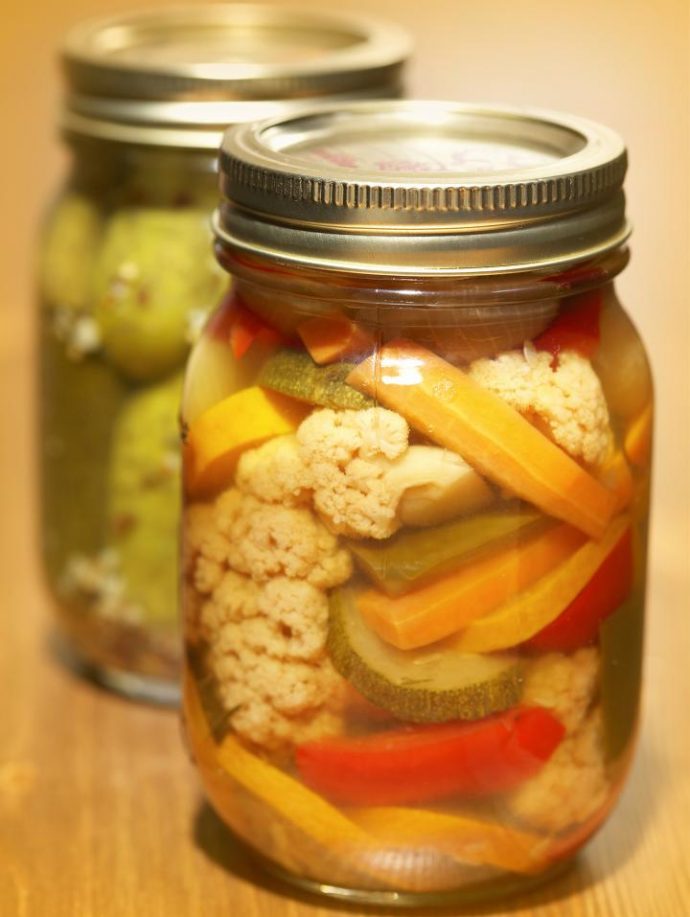“P
ickling is a way to preserve the bounty of the season’s harvest. See our tips, pickling measures, and pickling recipes.
In pickling, the process is about adding acid (vinegar or lemon juice) to a low-acid food to lower its pH to 4.6 or lower. Acid foods include all fruits except figs, most tomatoes, fermented and pickled vegetables, relishes, and jams, jellies, and marmalades.
PICKLING TIPS
- Produce must be fresh when pickled. Avoid using waxed supermarket produce.
- Select the most uniform, unspoiled produce.
- Scrub food well. Be sure to remove and discard ¼–inch slice from the blossom end of fresh cucumbers. Blossoms may contain an enzyme that causes excessive softening of pickles.
- Use canning or pickling salt (not iodized table salt!). Pickling salt has no additives. Iodized salt makes the brine cloudy and may change the color and texture of the vegetables as well as possibly leave sediment at the bottom of the jars.
- For the best results, use white distilled or cider vinegars with 5 percent acidity. Use white vinegar when light color is desirable, as with fruits and cauliflower.
- For crisper pickles, put the vegetables (whole or sliced) into a wide bowl and spread a layer of pickling salt on top. Cover and let sit overnight in a cool place. Discard the liquid, then rinse and dry the vegetables before pickling or canning as usual. The salt helps to pull the moisture out of the vegetables and makes them crisper.
- Measure or weigh carefully, because the proportion of fresh food to other ingredients will affect flavor and, many times, safety. Here are pickling measures:
PICKLING MEASURES
| Pickling salt | 1 pound = 1–⅓ cup |
| Granulated sugar | 1 pound = 2 cups |
| Brown sugar | 1 pound = 2–¼ to 2–¾ cups, firmly packed |
| Fresh herbs | 1 tablespoon = ½ teaspoon crushed dried herbs |
- Sterilize your empty jars. Do not use recycled commercial jars or old-style home-canning jars. They can break in the canning process.
- Use new jar lids for a tight seal. To avoid rust, screw bands should be removed from processed jars that are stored. They can be easily removed after the jars have cooled and sealed, and then reused.
- Always wipe the rim of the jar clean for a good seal after filling and just before putting the lid on.
- Process jars in a boiling-water canner for the correct amount of time (a canner is a large standard-size lidded kettle with a jar rack, designed for heat-processing 7 quart jars or 8 to 9 pint jars in boiling water).
- Label and date your jars and store them in a clean , cool, dark, dry place such as a pantry, cabinet, or basement. Don’t store in a warm spot!
- To allow pickles to mellow, wait at least 3 weeks before using.”
Snag some recipes from the full article!


